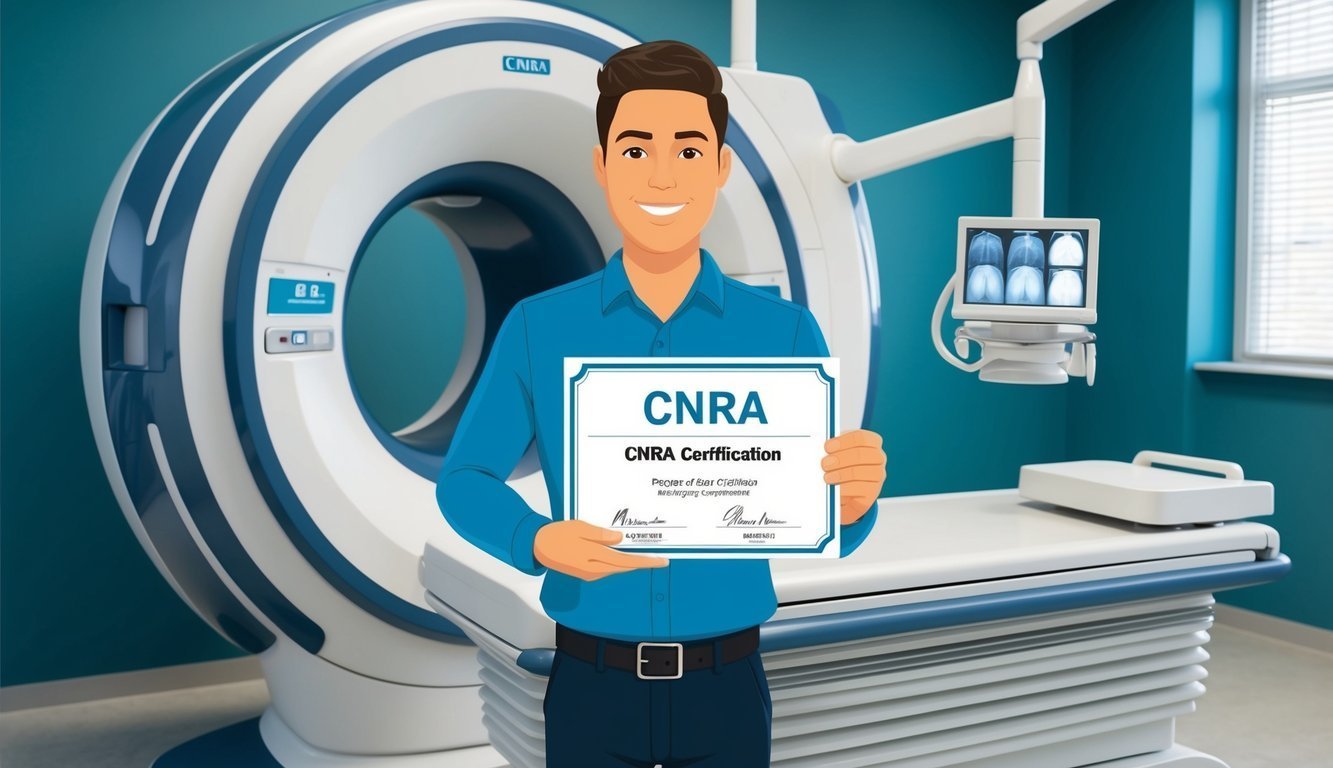Becoming a Certified Registered Nurse Anesthetist (CRNA) represents a significant achievement in your nursing career.
The CRNA certification process requires rigorous training.
This includes obtaining a Master’s or Doctoral degree, passing a national certification exam, and maintaining ongoing education.
This certification not only enhances your skills but also opens doors to advanced practice opportunities and higher earning potential.
As a CRNA, you play a crucial role in patient care.
You administer anesthesia and manage patient safety during surgical procedures.
To begin this journey, you must first meet the qualifications for entry into a CRNA program.
This typically includes obtaining a Bachelor of Science in Nursing (BSN) and gaining experience as a registered nurse.
You can find more detailed information on the requirements at the American Association of Nurse Anesthetists.
Maintaining your certification is an ongoing commitment.
You will need to participate in continual education and regularly renew your certification through the National Board of Certification and Recertification for Nurse Anesthetists (NBCRNA).
Staying informed about these demands is essential for your professional growth and compliance in the highly specialized field of nurse anesthesia.
For further guidance on certification, visit the NBCRNA.
Understanding CNA Certification

CNA certification is essential for individuals seeking to work as Certified Nursing Assistants.
This section will cover the crucial responsibilities of CNAs and the specific requirements needed to obtain certification.
The Role of a Certified Nursing Assistant
As a Certified Nursing Assistant, your primary responsibilities include providing direct patient care, assisting with daily activities, and ensuring the comfort and safety of patients.
You will perform tasks such as bathing, dressing, feeding, and monitoring vital signs.
Effective communication is vital in this role, as you will often relay information between patients and healthcare professionals.
You may also help rehabilitate patients, assisting them with exercises and mobility.
This position requires patience and empathy, as you work closely with patients who may be vulnerable or in distress.
Your ability to offer compassionate care significantly impacts their recovery and overall well-being.
Certification Requirements and Eligibility
To become a Certified Nursing Assistant, you must meet specific eligibility requirements.
Typical prerequisites include being at least 16-18 years old and having a high school diploma or GED.
Most states require you to complete a state-approved CNA training program.
This program typically includes both classroom and clinical instruction.
After completing training, you must pass a competency exam that assesses your knowledge and skills.
Some common requirements include:
| Requirement | Description |
|---|---|
| Age | Must be 16-18 years old (varies by state) |
| Education | High school diploma or equivalent |
| Background Check | Criminal background check may be required |
| Health Screening | Some states require physical exams or immunizations |
Maintaining certification often requires continuing education and demonstration of ongoing competency.
This ensures you stay updated with best practices and changes in the healthcare field, enhancing patient care quality.
For more detailed information, you can visit resources like Nurse.org or EveryNurse.org.
The CNA Training Process

The training process for becoming a Certified Nursing Assistant (CNA) involves several structured components.
Understanding these elements, including training programs, curriculum content, and clinical experience, is essential for your success in the field.
Overview of CNA Training Programs
To become a CNA, you must complete a state-approved CNA training program.
These programs can be found at various institutions, such as community colleges, vocational schools, and hospitals.
Most programs consist of a combination of classroom instruction and hands-on clinical training.
The typical training duration ranges from 4 to 12 weeks, depending on your state’s requirements.
Programs usually require a minimum number of training hours—often around 75 to 150, including both practical and theoretical components.
You can explore reputable options, such as those offered by the American Red Cross for structured training and certification.
Curriculum and Key Learning Areas
The curriculum of a CNA training program covers several crucial areas to prepare you for your role.
Key subjects typically include:
- Anatomy and Physiology: Understanding body systems is essential for providing effective care.
- Infection Control: Techniques to prevent the spread of disease and maintain hygiene are critical in healthcare settings.
- Basic Patient Care: Skills in bathing, feeding, and assisting with daily activities are emphasized.
Instructor-led sessions combine both theoretical and practical lessons to equip you with necessary knowledge and competencies.
Hands-on practice is also integrated into the curriculum, allowing you to apply the skills learned in a controlled environment.
Clinical Training and Skill Development
Clinical training is a vital part of your CNA education.
This phase generally occurs in a healthcare setting, such as a hospital or long-term care facility.
During this time, you will gain real-world experience under the supervision of experienced nursing staff.
You will practice essential skills like:
- Taking vital signs
- Assisting with mobility
- Communicating effectively with patients
Clinical training solidifies your knowledge from classroom instruction and translates it into practical experience.
This combination ensures you are well-prepared for the certification exam and subsequent job responsibilities.
Completing the CNA Certification Exam
The CNA certification exam is a crucial step for aspiring certified nursing assistants.
It tests both your theoretical knowledge and practical skills required for the role.
Understanding the exam’s components and effective preparation strategies can significantly enhance your chances of success.
Exam Components and Structure
The CNA certification exam typically consists of two main parts: a written exam and a skills demonstration.
-
Written Exam: This part includes multiple-choice questions that assess your understanding of nursing fundamentals, patient care, and safety protocols. You will encounter questions related to vital signs, infection control, and basic human anatomy.
-
Clinical Skills Exam: After passing the written portion, you will demonstrate key nursing skills. Common skills tested include measuring vital signs, bathing a patient, and correct handwashing techniques. A list of skills might include:
- Taking and recording vital signs
- Assisting with mobility
- Providing patient hygiene care
To pass, you must demonstrate proficiency in a series of tasks outlined during your training.
For more details, you can visit the Nurse Aide Frequently Asked Questions.
Exam Preparation and Best Practices
Preparing for the CNA exam involves several strategic steps to ensure your readiness.
-
Study the Content: Focus on materials from your training program that cover both the written exam and clinical skills. Resources from organizations like the Red Cross can provide valuable study aids.
-
Practice Skills: Engage in hands-on practice with peers or instructors to become comfortable with performing clinical skills. Familiarize yourself with the specific tasks you will need to demonstrate.
-
Take Practice Tests: Use available practice exams that mirror the format of the certification test. This can help you identify areas for improvement and reduce test anxiety.
-
Review State Requirements: Each state may have unique competencies and regulations. Make sure you are familiar with any specific requirements outlined by your state.
By following these guidelines, you can confidently approach the CNA certification exam and increase your chances of becoming a certified nursing assistant.
Career Opportunities for CNAs

As a Certified Nursing Assistant (CNA), you have access to diverse career opportunities across various healthcare settings.
Understanding where you can work and how to advance your career is crucial for your professional growth.
Work Environments and Employer Types
CNAs can find employment in several environments.
Common employers include:
| Work Environment | Description |
|---|---|
| Nursing Homes | Provide long-term care for elderly and disabled residents. |
| Hospitals | Offer opportunities in diverse departments, treating a variety of patients. |
| Assisted Living Facilities | Support residents with daily living activities while fostering independence. |
| Home Care | Deliver personalized care to patients in the comfort of their homes. |
Each setting presents unique challenges and rewards, allowing you to tailor your career path based on your interests in patient care and work environments.
Growth Potential and Advancing Your Career
The potential for advancement as a CNA is promising.
With experience and additional training, you can progress to more specialized roles.
Consider these options:
- Advanced CNA Roles: Through continued education, you can become an Advanced Certified Nursing Assistant, taking on more complex responsibilities.
- Specializations: You might choose to specialize in areas like geriatrics or palliative care, enhancing your expertise and employability.
- Further Education: Pursuing an LPN or RN degree can broaden your job opportunities.
CNAs typically earn competitive salaries, with the potential for increases as you gain experience and certifications.
Employers often value skilled healthcare workers, leading to more job openings and career stability in the healthcare sector.
For more information, explore these career paths for CNAs.
Maintaining CNA Certification
To ensure your continued eligibility as a Certified Nursing Assistant (CNA), it’s essential to meet specific standards for maintaining your certification.
This includes fulfilling continuing education requirements and following the renewal procedures set by your state.
Continuing Education and In-Service Training
Continuing education is a vital component of maintaining your CNA certification.
Most states require CNAs to complete a certain number of Continuing Education Units (CEUs) every two years.
Common Requirements:
- Typical CEUs: 24 hours
- In-Service Training: Must include hands-on practice and patient care updates.
Consider utilizing online courses for convenience and flexibility.
Keep track of your completed training hours in a file, as you may need to provide proof during renewal.
For state-specific requirements, you may refer to sites like Nurse.org.
Renewal Procedures and State-Specific Requirements
Renewing your CNA certification involves submitting a renewal application.
The application typically includes proof of continuing education and recent employment.
Steps to Renew:
- Fill Out Renewal Application: Obtain the form from your state’s CNA registry.
- Submit Documentation: Include records of your continuing education and employment verification.
- Background Check: Some states may require a criminal background check.
Each state has its rules about CEUs and work hours.
For example, some states have a minimum requirement for hours worked within the past 24 months to maintain certification.
Always consult your local regulations to ensure compliance.

